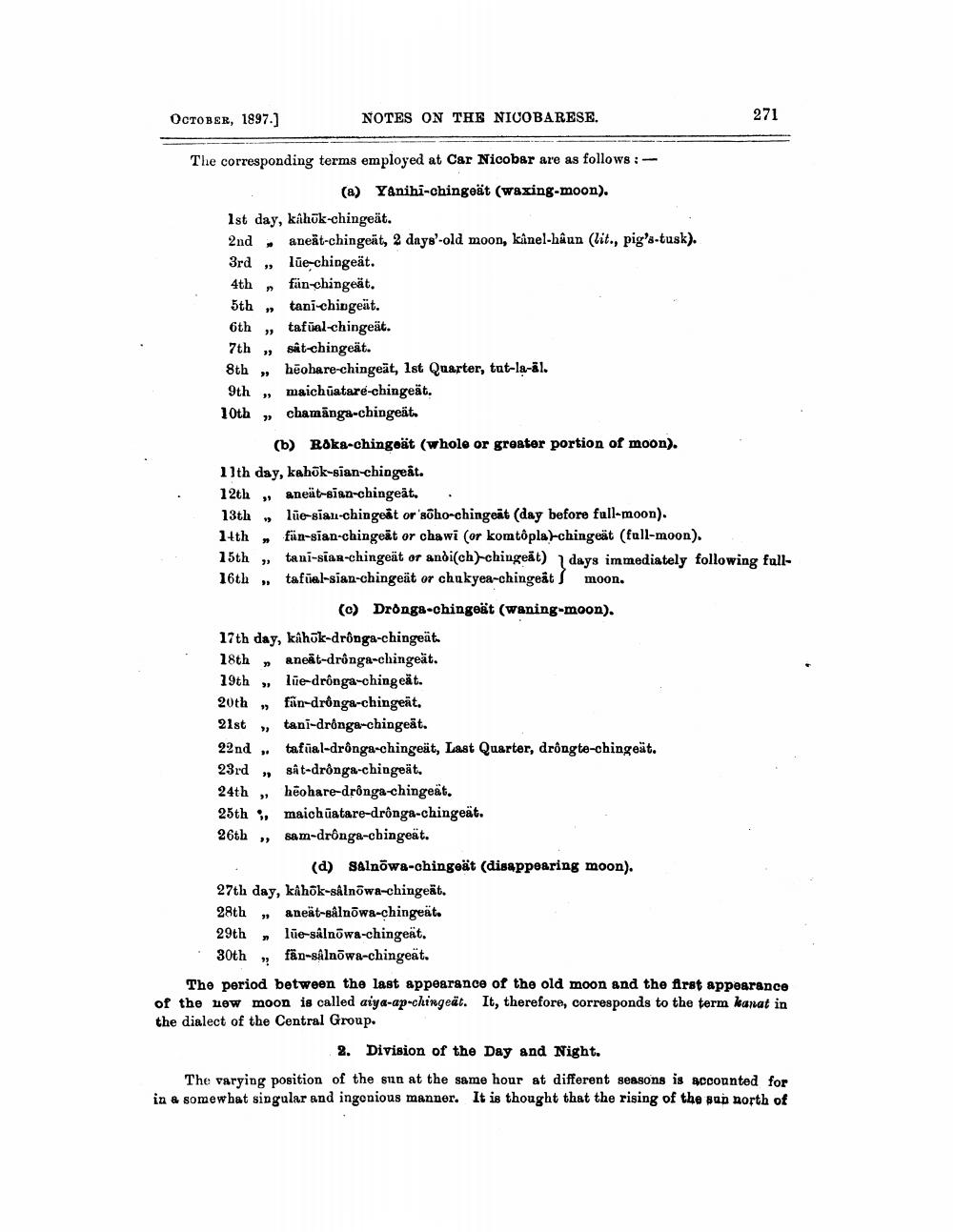________________
OCTOBER, 1897.]
The corresponding terms employed at Car Nicobar are as follows:
(a) Yanihi-chingeät (waxing-moon).
1st day, kâhōk-chingeät.
2nd, aneat-chingeät, 2 days'-old moon, kânel-hâun (lit., pig's-tusk). 3rd lue-chingeät. 4th fän-chingeät. 5th tani-chingeät. 6th ,, tafual-chingeät.
7th sat-chingeät.
8th
9th 10th
33
"
39
39
39
33
""
NOTES ON THE NICOBARESE.
"9
11th day, kahōk-sian-chingeât.
12th,, aneät-sian-chingeät,
13th, lue-sian-chingeat or soho-chingeat (day before full-moon).
heohare-chingeät, 1st Quarter, tut-la-al.
14th fän-sian-chingeat or chawi (or komtôpla)-chingeät (full-moon).
15th
16th
"3
maichuatare-chingeät. chamanga-chingeät.
(b) Roka-chingeät (whole or greater portion of moon).
30
17th day, kâhōk-drônga-chingeät. 18th aneat-drônga-chingeät.
29
19th, lue-drônga-ching eat.
20th
fan-drônga-chingeit.
21st », tani-drônga-chingeät.
tani-sian-chingeät or andi(ch)-chingeat) days immediately following fulltafual-sian-chingeät or chukyea-chingeât moon.
(c) Dronga-chingeät (waning-moon).
22nd tafual-drônga-chingeät, Last Quarter, drôngte-chingeät.
23rd sit-dringa-chingent,
24th
heohare-drônga-chingeat.
25th, maichuatare-drônga-chingeät.
26th,, sam-drônga-chingeät.
(d) Salnowa-chingeät (disappearing moon).
271
27th day, kâhok-sâlnowa-chingeät. 28th,, aneät-sâlnowa-chingeät. 29th » lue-sâlnowa-chingeät.
30th fán-sklnöwn-chingent.
"?
The period between the last appearance of the old moon and the first appearance of the new moon is called aiya-ap-chingeät. It, therefore, corresponds to the term kanat in the dialect of the Central Group.
2. Division of the Day and Night.
The varying position of the sun at the same hour at different seasons is accounted for in a somewhat singular and ingenious manner. It is thought that the rising of the sun north of




